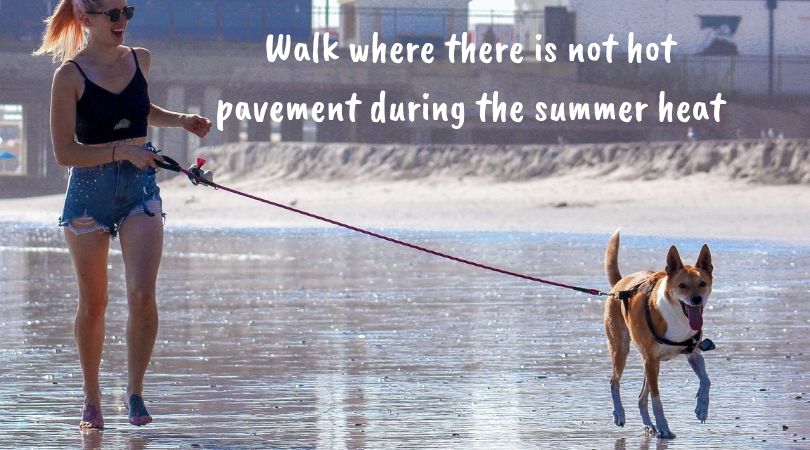Temperature elevation in your dog can happen for more than one reason - they could have a fever (which often means infection), or it could be elevated from environmental factors such as heat and humidity. A dog’s normal temperature ranges from 99 to 102 degrees Fahrenheit, and temperatures in the 103-105 range could mean heat exhaustion. At above 105 degrees Fahrenheit, your pet becomes at risk for heatstroke, and it could be fatal.
Predisposing and Environmental Factors
There are many different predisposing factors when it comes to heatstroke in your pets. Dogs who have flat faces with short noses, are overweight, or have thick fur are more prone to heatstroke. Herding and hunting dogs are typically significantly more active than other breeds and need to be monitored more in the hotter months to avoid overheating. Remember, a dog can experience heatstroke even when it’s just humid outside.
Symptoms of Heatstroke
Dogs do not have sweat glands like humans; they only have them on their paw pads, making it difficult to dissipate heat. Panting is a method of evaporative cooling. When your dog begins to excessively pant and drool, they could be too hot for comfort. In this case, your dog may have bright red gums, become unstable on his feet, or even collapse. Your dog can also begin to vomit, have bloody diarrhea, or experience seizures. Immediately remove him from the hot environment and work on active cooling. Place him in a bathtub of cool water or lay cool, wet towels over him in the armpit and groin regions. (Do not use COLD water as you could cool your dog too rapidly.) Directing a fan of him will help with evaporative cooling as well. You should get your pet to a veterinarian as soon as possible.
Treatment of Heatstroke
The main medical treatment for heatstroke is administration of IV fluids and electrolytes, as well as continued efforts to cool the pet. Blood work (CBC and chemistry values, along with clotting times) are likely to be run. Sometimes a plasma transfusion may be indicated if clotting times are prolonged. Pets may also need support for any neurologic disorders (seizures). Medications to protect the gastrointestinal tract may also be administered.
Things to Avoid in the Summer Heat
- Avoid hot surfaces like asphalt and concrete on your dog's paws. If necessary, make sure he has some form of protection (such as hiking booties) on his feet.

- Make sure to walk your dog in the early morning or later in the evening when it’s cooler.
- Give your pets proper access to shade and water when outside.
- DO NOT leave your pets in the car for any reason. Instead, leave them at home, or take them inside your destination with you. The car gets significantly hotter than the temperature outside, whether parked in direct or indirect sunlight, even if the windows are down. A pet in a locked car can get heatstroke in a matter of minutes.
If you have any questions about your dog's safety when summer temperatures climb, please feel free to reach out to us!
